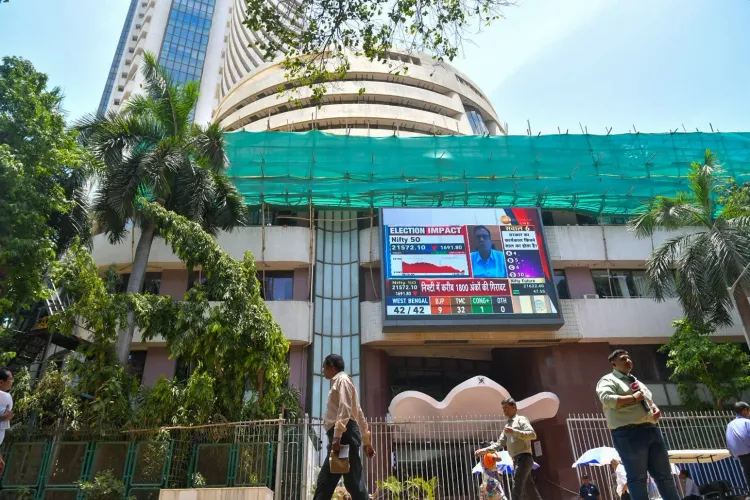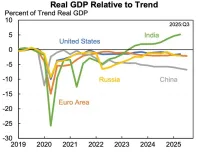Why Did Nifty and Sensex Start Lower with New Trump Tariffs?

Synopsis
Key Takeaways
- Indian markets opened lower due to global cues.
- Nifty Pharma index fell by 2.75%.
- Hindustan Unilever showed significant gains.
- Investors advised cautious strategies amidst volatility.
- US markets also faced declines despite strong tech earnings.
Mumbai, Aug 1 (NationPress) The Indian stock market opened on a negative note on Friday, influenced by weak global signals due to the implementation of new tariffs by Trump. The pharmaceutical sector faced the most significant decline, with the Nifty Pharma index dropping by 2.75%.
As of 9:25 am, the Nifty 50 index fell by 51 points or 0.21% from the previous day’s closing, now standing at 24,716. The BSE Sensex decreased by 179 points or 0.22%, trading at 81,005.
In contrast, both the BSE MidCap and BSE SmallCap indices saw a slight rise of 0.05%.
Among sectoral indices, the Nifty FMCG index was an exception, showing a gain of 1.46%. Besides the strong selling pressure in the pharmaceutical stocks, the Nifty IT index fell by 0.80%, and the Nifty Metal index decreased by 0.99%.
On the Nifty stocks front, Hindustan Unilever (HUL) recorded the largest gains with a 4.45% increase, followed by Tata Consumer Products, Hero MotoCorp, Maruti Suzuki, and Trent. In contrast, Dr. Reddy’s Laboratories led the laggards with a 1.41% decline, followed by Cipla, ONGC, Larsen & Toubro, and Tata Steel.
“Even though the Nifty saw a rebound yesterday, it remains at risk unless it can maintain a position above the 24,800 mark. A closure above this level could pave the way towards the 25,000 mark. Immediate support is at 24,600, followed by 24,500,” advised Hardik Matalia from Choice Equity Broking.
“Given the ongoing high volatility and conflicting technical indicators, traders are recommended to adopt a cautious 'sell-on-rise' strategy, particularly when using leverage. It is wise to book partial profits during upward movements and maintain tight trailing stop-losses. New long positions should only be considered if the Nifty sustains above 25,000,” Matalia added.
On July 31, US President Donald Trump signed an executive order altering “reciprocal” tariffs applicable to several countries including Syria, Laos, South Africa, Myanmar, etc., with updated duties ranging from 10% to 41%.
Despite solid earnings reports from tech giants Microsoft and Meta Platforms, US markets struggled to recover from losses. The S&P 500 dropped 0.37%, marking its third consecutive loss. The Dow Jones Industrial Average saw a decline of 0.74%, while the Nasdaq Composite remained relatively stable with a slight dip of 0.03%.
“In the short term, market movements will be influenced by tariff-related news. Since the implementation date for the modified tariff rates is set for August 7, countries have some time to negotiate for lower tariffs. Recent market trends suggest that traders view the 25% tariff as a temporary concern,” noted Dr. VK Vijayakumar, Chief Investment Strategist at Geojit Investments Limited.
Asian markets predominantly traded in the negative zone, with South Korea’s Kospi suffering the most significant decline at 2.94%. The Nikkei 225 in Japan fell by 0.38%, and the Shanghai Composite dropped 0.10%. In contrast, Hong Kong’s Hang Seng Index gained 0.13%.
On July 31, foreign institutional investors (FIIs) continued their selling streak for the ninth consecutive session, divesting equities worth Rs 5,588 crore. However, domestic institutional investors (DIIs) remained net buyers for the 19th consecutive session, investing Rs 6,372 crore into the market.









